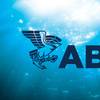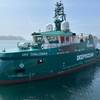Letter to the Editor
Dear Editor:
Clayton Cook's article on the U.S. shipbuilding market was a thoughtful review, as one would expect from such a knowledgeable source whose contribution and commitment to the marine sector is well known.
His review of the non-contiguous liner trades characterized the Puerto Rico fleet as "antique," and accurate description of the self-propelled vessels serving the trade. That section, however, did not mention the tug/barges now serving the Puerto Rico lane. Today the majority of the marine freight moving between the mainland and Puerto Rico moves on tug/barge systems. These tug/barge systems are newer than the self-propelled vessels. In our own case, the weighed average age of our fleet is some six years or one-fifth that of the self-propelled vessels in the trade. For a variety of reasons, tug/barge systems are more suited to handle the higher cube equipment that has been commonplace on the mainland for over a decade. Puerto Rico is increasingly well served by tug/barge systems and no discussion of the Puerto Rico liner trade could be complete without discussing what is now the dominant and still growing model. Indeed, one consistent change in a trade that has been quite turbulent is the increase in the collective tug/barge share, which was less than one-third a decade ago.
Reeves & Associates, a recognized independent expert in the domestic marine sector, recently completed an excellent analytical overview of the Puerto Rico liner trade, highlighting among other things the effect of tug/barge economics and higher cube equipment. As an example, the report stated: "Rather than being technologically backward, the U.S./Puerto Rico trade is in synch with the state of the art in the U.S. mainland logistics, enabling U.S. and Puerto Rican shippers to effectively integrate their U.S. mainland-Puerto Rico traffic flows into their overall North American distribution strategies. For example, Wal-Mart is able to pack a load for Puerto Rico in just the same way as it would for a destination within the 48 mainland states. With an integrated truck/marine system built around commodious 53-ft. equipment and very cost efficient tug/barges, we believe that we are the most "in synch" with mainland distribution systems of all the carriers serving Puerto Rico.
It's my view that the past and the future of the Puerto Rico lane can be best understood by recognizing the underlying cost differences in tug/barge and high-cube equipment systems compared to self-propelled vessels and typical marine equipment. We believe that tug/barge systems built around high-cube equipment have a meaningful marine cost advantage today that expands significantly when you take into account the pro-forma cost of new self-propelled vessels. In addition, there are a number of other areas where a high-cube, integrated system like ours has cost and service advantages. These factors will continue to effect change in the Puerto Rico lane and the simple macroeconomics of the Puerto Rico trade lane should leave few questions about what is unfolding now, what will continue to unfold and why it is unfolding. As mentioned above, tug/barge systems now carry the majority of all the marine freight that moves to Puerto Rico. The analytical facts support a continuation of this trend. The winds of change are blowing in the Puerto Rico lane. I believe that policymakers, shipbuilders, shippers and carriers who avail themselves of solid factual data and information will be the first to see how the future will unfold and use this insight to take the appropriate steps to benefit their respective constituencies.
Best Regards,
John D. McCown, Chairman & CEO
Trailer Bridge










